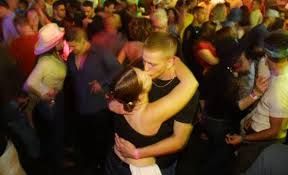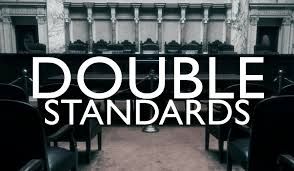Sex
Hooking Up: Complexities and Double Standards
The research on hook-up sex reveals complex findings and sexual double standards
Posted February 15, 2014
Heterosexual hook-up sex among college students is in the spotlight in the popular and scientific literature. A stellar example of the latter is a 2013 American Psychological Association Continuing Education Corner article. A representative example of the former is a New York Times article. Hook-up sex has also been the subject of several recent documentaries, including the highly acclaimed “Spitting Game.” While much of the popular media tells us that college students are hooking up at alarming rates and that such encounters are ripe with risk, the scientific literature yield more complex conclusions.
According to the APA summary, “The most recent data suggest that between 60 percent and 80 percent of North American college students have had some sort of hookup experience.” Importantly, however, hooking up is not new to today’s college students; quoting the APA summary, “Hookups began to become more frequent in the 1920s.” A study presented at the 2013 American Sociological Association reports that students in college between 2002 and 2010 do not report having more frequent sex or more sexual partners since turning 18 than did undergraduates in college from 1988 to 1996. However, those from the current era are more likely to report that one of their sexual partners during the past year was a casual date/pickup—although the differences are not quite as divergent as one might assume. Forty-four percent of those from the current era and 35% of those from the past era reported at least one casual sexual encounter.
Just what comprises a casual sexual encounter/hook-up? Quoting a Huffington Post article, “While everyone is talking about it, no one is exactly sure what it means.” Authors of a 2013 study published in the Journal of Sexual Behaviors tell us that “college students differ greatly in their use of the terms when referring to the sexual behaviors that occur during the hookup.” Student definitions run the gamut from “making out” (i.e., kissing) to “having sex” (i.e., intercourse). Some writings on the topic and my own students tell me that the ambiguity is purposeful and functional. According to the Huffington Post article, this ambiguity “enables both men and women to round up or round down their experiences” and thus “help both men and women dodge the judgments others might make about their sexual behavior.” In a class discussion, my own students echoed this, saying “It’s vague because we want it to be.” So, if a college student tells you they hooked-up, they may have made-out on the dance floor or they may have had penile-vaginal intercourse with someone they just met.

Having intercourse with a relative stranger is sometimes—but not always—associated with risk. According to the APA summary, “in a study of 394 young adults followed across a university semester, those with more depressive symptoms and greater feelings of loneliness who engaged in penetrative sex hookups subsequently reported a reduction in both depressive symptoms and feelings of loneliness. … At the same time, participants who reported fewer depressive symptoms and fewer feelings of loneliness who engaged in penetrative sex hookups subsequently reported an increase in both depressive symptoms and feelings of loneliness.” While there is no doubt that there are risks associated with hook-ups, including emotional and psychological distress, sexual violence, sexually transmitted infections and pregnancy, the relationship between hook-up sex and mental health is not straightforward.
Equally complex—and ripe with sex-differences—are post-hook up feelings. According to a study of first-semester college students, women, but not men, who had engaged in intercourse during a hookup showed higher rates of mental distress than those who had not done so. Likewise, while on average, both men and women appear to have higher positive than negative affect after a hook-up, sex differences remain. As just one example, in a study asking college students to describe their feelings the morning after a hookup, 82 percent of men and 57 percent of women were generally glad they had done it. Perhaps related to this sex difference in post-hook up positive versus negative affect, one study reports that women are also more likely than men to hope that a relationship will develop following the hook-up. In short, again quoting the APA summary, most young adults experience “a kaleidoscope of reactions” following a hook-up, with women more at risk than men for negative emotional reaction such as regret.
Women not only have more regret, they have less pleasure. In a study of over 12,000 undergraduates from over 20 colleges, researchers found that in first-time hookups men were much more likely than women to receive oral sex (i.e., 55% versus 19%). Likewise, men also reached orgasm more often than women. Specifically, according to this study, in first-time hookups, 31 percent of men and 10 percent of women reached orgasm. Based on these findings, these researchers concluded that there exists a double standard in hook-ups and stated, “Men should be challenged to treat even first hookup partners as generously as the women they hook up with treat them."

Given that college students are engaging in hook-up sex (albeit not that much more than their predecessors), this topic is likely to remain in the spotlight. Yet, just what college students are doing, and importantly, how they are reacting emotionally and sexually, is far from straightforward. What is clear, however, is that missing from the discourse is research on same-sex hookups. Also clear is that, in heterosexual college hook-ups, the double standard is alive and well, yielding less pleasure and more regret for women than for men.


